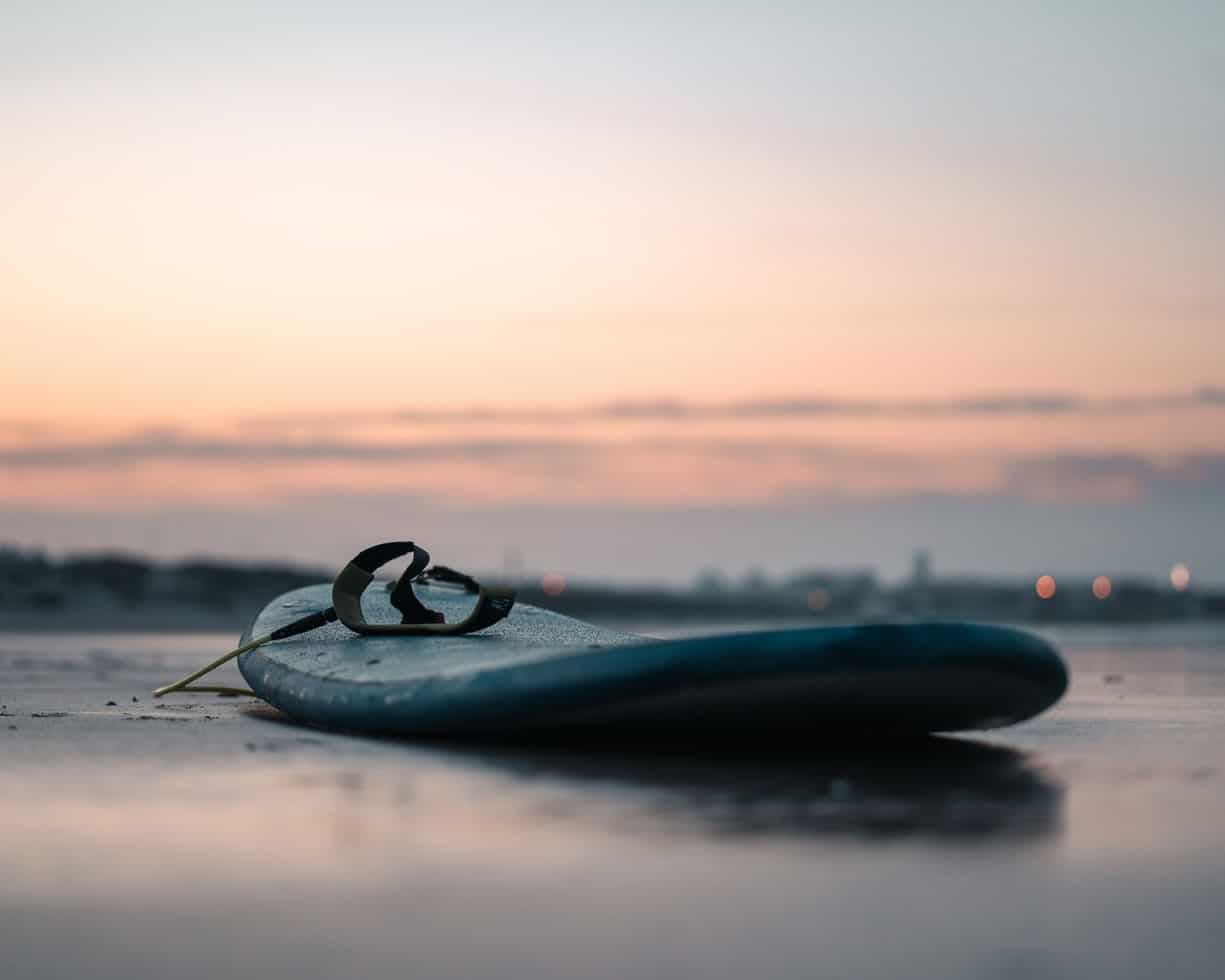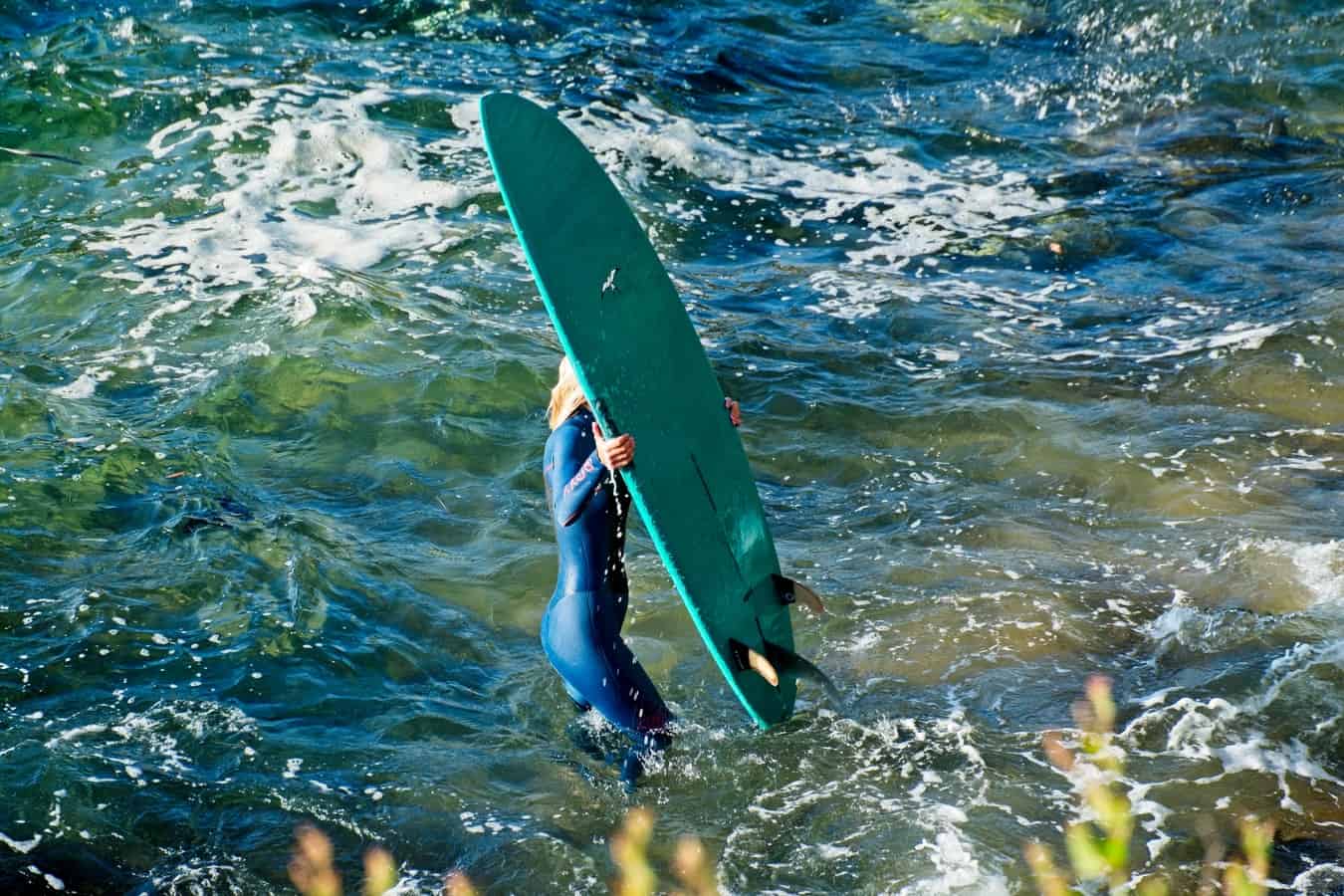In surfing, all you need is a board and some waves, right? Well, kind of.
Surfing can be simple in terms of the gear required, but one of the most important aspects is wax. The wax on your board spells the difference between a great session and a wipeout.
It gives you the ability to stay on your board through the waves. Every surfer has their own opinion about types of wax and how often to use them.
But how often you should wax your board? You can and often should top up your board every time you surf. But, depending on the temperature of the water you surf in, you should fully clean and re-wax your board every 2-3 months, or 4-6 times per year.
Adding wax to your surfboard provides grip. This grip gives your body the friction needed to pop up and stick to your board.
Wax is the only thing connecting your feet to the board when you’re out on the water. Without it, you’ll just slip off.
Most people add wax to their board every time they surf. They feel it gives fresh grip to surf better.
However, over time this wax gets dirty from hours in the water, or from standing.
Dirty, greasy wax loses its ability to provide traction over time. Eventually, applying more wax over and over ends up as a thick mess with little grip.
In order to make the best of your sessions, wax should be fully replaced every couple of months. Fully stripping and reapplying your wax ensures you’re getting the best out of your surfing experience.
Because why would you want to go out on the water to slip right off?
Types of Surf Wax
Now that you’re ready to prep your board, you have to choose the right product to use. Cold water, warm water, what’s the difference? What’s the point of a base coat, what even is surf wax?
Surf wax is a special wax made for coating your board. It’s generally made of paraffin or beeswax, sometimes a combination of the two. The general rule of thumb is, the colder the water the softer the wax. The softer a wax, the lower its melting point.
So if you use a cold water wax in warm waters, the temperature of the ocean will melt it right off your board. In the reverse, the colder the water, the harder and less grippy the wax. Thus needing a softer type to be able to surf.
Here’s a breakdown of what you need to know.
Cold Water
Cold water wax is specifically formulated to work best in water temperatures 50-58 degrees (farenheit). It sometimes has petroleum jelly added to its formula to create a softer wax.
This is the softest wax choice and great for surfing places like Northern California where the ocean is chilly.
Cool Water
Cool water wax is the next level up. It’s for water between 56-68 degrees.
You can find brands that sell cold/cool combos if the ocean where you surf varies often. This type of wax is ideal for places like Southern California.
Warm Water
Warm water waxes are for ocean temperatures 66-76 degrees. This is the line into what’s considered a hard wax.
You can use this wax generally when it’s a warm water day in California, or cold out somewhere more tropical.
Tropical Water
Tropical water wax is formulated for water temperatures above 76 degrees.
As the hardest of the waxes, it’s perfect for places like Hawaii where the ocean can reach 80 and above.
Base coat
Base coat is essentially like painting a wall. You apply a primer to give the paint something to stick to.
This applies similarly. When your board is new, or when you’ve stripped your board for a fresh wax, you apply a base coat.
It’s made of a hard wax that provides no grip but creates a canvas for your surf wax to stick better.

Cleaning and Prepping Your Surfboard
Once you have your wax, you can’t just willy nilly rub it on. Not only do you first have to clear off your old wax, but there’s a technique to applying.
The first step in waxing your board is to first clear it of the old, dirty wax. If you have a brand new board, obviously this step won’t apply but is important to learn all the same.
In order to properly clean your board you need, a wax comb (or old credit card if you don’t have your comb), a cloth and some surfboard cleaning spray.
Start by placing your board in the sun. If there isn’t any sun, you can also use a hair dryer.
This step is simply to warm up the wax, making it easier to scrape off.
Next, take your preferred scraping tool, and cut diagonals through the wax on your board, creating x shapes. After completing the x’s, use your sharp flat edge to peel off the wax on your board.
Depending on how thick or old your current wax job, this can take a couple of rounds to fully remove.
Once you’ve scraped off all the visible wax, spray with some warm water to remove more of the less visible residue.
Next is cleaning spray. Even though the wax appears removed, lots of residue will remain. Using a cleaner approved for boards, spray down your board and clean off with a soft cloth.
Once your board is fully cleaned, you can add some coconut oil as a finishing touch. It will provide some condition and a glossy finish but this step isn’t necessarily required.
Now your canvas is ready for some fresh wax.
Applying the Wax
Basecoat
First and foremost is to apply your basecoat. This will lay the foundation for the wax to adhere to and will help it last longer.
In general, you want to apply wax to anywhere your feet will go. Add some extra extending out and back, just in case you need to move around a bit.
Longboarders can wax their entire board.
Some surfers also apply wax to the hand rails to help with duck diving, but it’s more of a preference.
However, whatever you do, don’t apply it to the bottom of your board. The water under your board will flow better when it’s clean and smooth.
There are many ways to go about applying your wax. Circular motions, x’s, up and down etc. All of these are perfectly acceptable.
The most important part of the action is applying the right amount of pressure and product to create little bumps all over. It’s these bumps that will allow you to get traction.
If you go too light there won’t be enough for your topcoat to hold on too. Too hard and you’ll build too much wax. Practice will help you find the right pressure.
Hold your wax at a 45 degree angle and rub down. By doing so you’ll have better control over the application than trying to push up or by using the flat of your bar.
Due to the hardness of your base coat, this will be the most effortful part of waxing. Since it’s also super important, take your time with this step, making sure the sticky bumps you need are evenly distributed.
Topcoat
Next is your top coat. Topcoat is the layer above your base coat, generally made of a bit softer wax.
This is the step that will provide you with grip.
The application of the top coat requires a softer hand than when building your base. Now that you have your foundation, move in soft circular motions, layering onto your base versus scraping it away.
In this process, you should notice the bumps from your base coat becoming more pronounced. After a few minutes of gentle pressure, your board should be good to go.
When waxing your board, watch out for bald spots. Areas of your board without wax, or enough.
Check your work after your base coat so you don’t waste product unnecessarily.
Don’t forget, you’re looking for a bumpy coat over smooth when it comes to waxing your board. It provides your grip, whereas a smooth coat will just make you slip.
Related Questions
Is it Bad to Leave Wax On Your Surfboard?
It’s not necessarily bad to leave wax on your surfboard. It’s more about how it impacts your ability to ride well.
The wax itself won’t harm your board if left on longer than a few months but it will eventually harm your sessions. Over time the dirt in your wax will lead it to lose its grip, making it hard to stay standing on a wave.
On top of this, if your wax gets too thick, it can actually cause your board to become unbalanced in the water, providing yet another challenge.
What is Surf Wax Made Of?
Surfing wax is made from a variety of ingredients, but mostly paraffin wax and beeswax.
Since paraffin is made with fossil fuels, and beeswax is made from an animal product, there are also choices out there for more environmentally friendly or vegan consumers.
These products are made with soy, coconut oil, vegetable oils and pine resin to name a few. However, to surfing purists, the best waxes are paraffin and beeswax.
Can I Make My Own Surf Wax?
If you’re looking to be eco friendly, you can try making your own wax to use on your board. You just need beeswax, coconut oil and tree resin if you’re surfing in cold water.
Mix three and a half parts beeswax to one part coconut oil in a pot, heating with a double broiler on the stove, continually stirring.
When the mixture is properly melted, pour out into a container, like a cupcake liner or small tupperware and let cool until hard.


